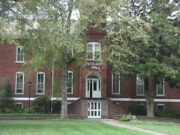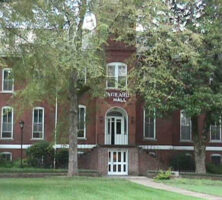Historically Black colleges and universities (HBCUs) have been defined as institutions that were established before 1964 with the principal mission of educating African Americans.
There are more than 100 HBCUs, located mainly in the southeastern United States, the District of Columbia, and the Virgin Islands. Georgia is home to ten HBCUs: Albany State University, Clark Atlanta University, Fort Valley State University, Interdenominational Theological Center, Morehouse College, Morehouse School of Medicine, Morris Brown College, Paine College, Savannah State University, and Spelman College.
The HBCU program came into existence in 1980, when U.S. president Jimmy Carter signed an executive order establishing the White House Initiative on HBCUs. The initiative was created to generate a federal government–wide effort to strengthen these institutions and to help HBCUs gain access to federally funded programs. Under subsequent administrations the program has been strengthened and the role of HBCUs expanded in national affairs.
In 1988 a survey of HBCUs was conducted under the secretary of the interior’s Historic Preservation Initiative (HPI). An outgrowth of the White House Initiative, the HPI was established to identify, restore, and preserve those historic structures on HBCU campuses considered to be the most threatened. It was established in direct response to the needs of many of the historically Black colleges and universities, which had critical rehabilitation and restoration needs but lacked the resources to repair their buildings.
The HBCU program has proven to be beneficial to Georgia in preserving special places. The survey singled out four HBCUs in Georgia among the final eleven identified by the National Park Service to contain buildings considered as historically significant and endangered. The schools were Morehouse College (Graves Hall), Morris Brown College (Gaines Hall), and Spelman College (Packard Hall), all now part of the Atlanta University Center. Savannah State University was the fourth HBCU to have a significant building identified (Hill Hall). All of these Georgia institutions have played and continue to play significant roles in the higher education of African Americans.
From 1994 to 1999 Congress appropriated $7 million under the authority of the National Historic Preservation Act for HBCU preservation grants. Matching grants were awarded to the United Negro College Fund, and then subgranted by the United Negro College Fund to HBCUs included in the secretary of the interior’s HPI.
HBCU grant funds are appropriated from the Historic Preservation Fund, and administered by the National Park Service.






